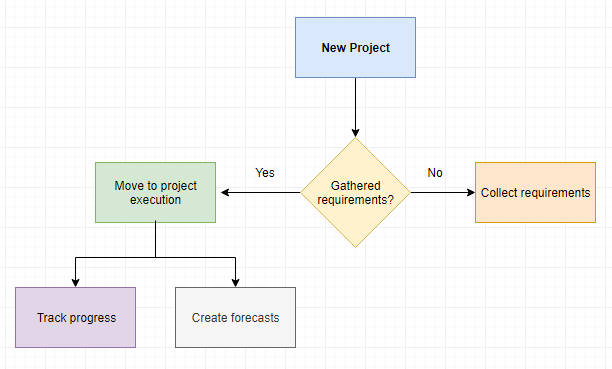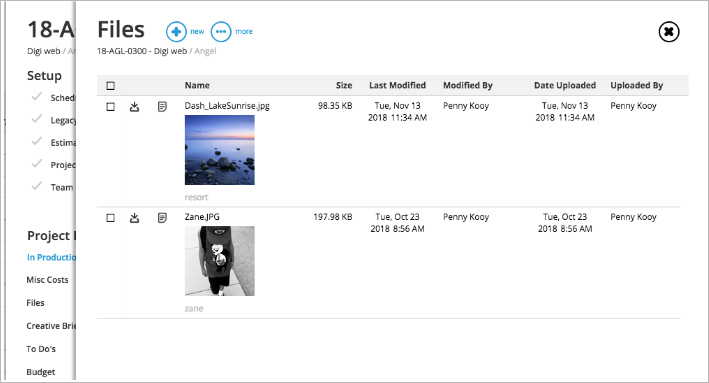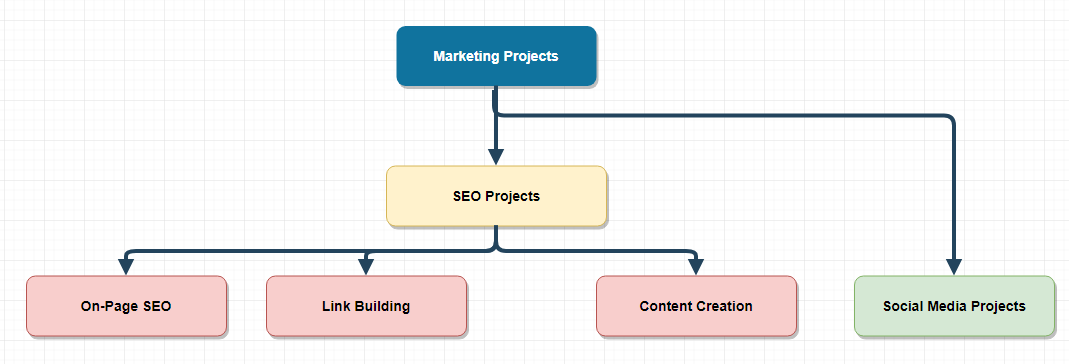— January 14, 2019
A well-defined project management framework will bring much-needed order to your projects. Learn how to create your own PM framework in this guide.
Have you ever found yourself completely overwhelmed at the start of a project? Or maybe you’ve scoped out a project and wondered what to do next.
If this describes you, you probably need a project management framework.
A project management framework – often shortened to just ‘PMF’ – brings much needed order to your organization’s projects.
It doesn’t matter whether you’re running an agency, a construction firm, or leading an engineering team, a well-formulated framework will help you develop best practices, create structure, and get organized. The result is on-time and under-budget project delivery.
In this guide, I’ll discuss what a project management framework is, why you need one, and how to create a framework for your organization.

What is a Project Management Framework?
The Merriam-Webster dictionary defines a framework as a “body of methods, rules, and postulates employed by a discipline: a particular procedure or set of procedures”.
And that’s exactly what a project management framework is: a set of methods, rules, and procedures used in project management.
This framework usually covers the entire lifecycle of the project. It defines the project’s charter, scope, and purpose upon initiation. And it specifies the exact processes, steps, and actions needed to execute the project until delivery.
The procedures in a PM framework are all interconnected. Imagine it like an enormous flowchart where each process depends on the outcomes of the previous processes.

The actions and steps in a framework can be either:
- Sequential, i.e. they need to be carried out in strict order, and one action needs to end before the other can begin
- Simultaneous, i.e. they can be carried out at the same time
For instance, when you’re gathering requirements from a client, you can also go about creating your reporting templates (i.e. simultaneous action). However, you can’t start work before you’ve gathered all the requirements, i.e. it’s a sequential action.
You might not call it as such, but your organization most likely already has a project management framework in place. Just think of what happens when you land a new client. You probably have a set of rules for onboarding the client, gathering requirements, and organization teams.
The complete collection of all these rules would be called your organization’s “project management framework”.
Framework vs Methodologies
A common source of confusion for project management beginners is the difference between PM frameworks and methodologies.
As we wrote in an earlier article, a project management methodology is a “set of guiding principles and processes for managing a project”.
On paper, this sounds pretty much the same as a PM framework.
The difference, however, is in their rigidity.
Project management methodologies are strictly defined. If you use the Integrated Project Management (IPM) methodology, for instance, your project will have to have its core components:

Failure to do so will cause the methodology to fall apart.
This rigidity can be attributed to the formal nature of project management methodologies. The rules and guidelines are set by an external authority such as PMI or GPM (for PRiSM). Project managers trained to use a particular methodology will, as a rule, follow its guidelines strictly.
In contrast, a project management framework gives you more freedom. You can create and abandon rules as necessary. It’s common to borrow elements from different methodologies to create a “hybrid” framework that fits your requirements.
For example, software development shops sometimes initiate projects using the IPM methodology. During execution, however, they switch to the Agile methodology.
Even further, a PM framework includes every aspect of project management, even the stages not included in a formal methodology. If you need extensive onboarding for new clients, your framework will include it. If post-delivery you need to keep clients engaged, you can create a framework for that as well.
Think of a project management framework as a DIY process for managing every aspect of your projects.
What Are the Benefits of Using a Project Management Framework?
It’s easy to see how using a common project management framework across the organization helps. Things become more streamlined, knowledge sharing becomes easier, and repeatable processes become more consistent.
These benefits are particularly important in the context of an agency. As any industry veteran will tell you, one of the hardest problems in growing an agency is scaling solutions. Too many agencies fall into the trap of delivering custom solutions for each client, wasting valuable resource time in management and organization.
By adopting a project management framework, you can bring much-needed uniformity to the agency’s client management and project delivery. You can create detailed frameworks for each solution and ensure consistent performance regardless of the client, project, or industry.

A centralized document sharing platform – like Workamajig – can bring consistency to your knowledge sharing
Imagine getting a new client and instead of wondering what to do next, you have a ready-to-use roadmap. You just plug in details of the new project and you’re ready to start.
In short, adopting a project management framework helps you:
- Improve communication and coordination across different project teams. A team facing a problem in one project can tap into the expertise of another team that faced a similar problem.
- Enhance knowledge sharing across the entire organization by creating a uniform repository of institutional knowledge. Lessons learned from one project can be applied to others, improving project delivery.
- Increase productivity by creating consistent, repeatable project management processes. You don’t have to create anything from scratch. Rather, you can use the proven steps from the existing framework.
- Improve accessibility and efficiency by creating templates and plans for different project-types. This enables even an inexperienced project manager to deliver better results by leveraging the knowledge of more experienced managers.
- Streamline management across the entire organization and integrate various departments. An agency working within a fixed framework usually has its financial, HR, and IT resources working in tandem.
Perhaps the biggest reason to adopt a project management framework is simple: everyone else already has one. If your agency skips creating its own framework, you’ll quickly find yourself outbid and outperformed by better-organized competitors.
A refined project management framework can be a powerful competitive advantage. Adopt one as soon as you can.

How to Create a Project Management Framework
Now comes the tricky part: creating a project management framework for your organization.
This is neither a quick nor a one-time exercise. Any PM framework you create takes time. It also takes endless revisions. You have to be willing to modify the framework as you learn new things.
Think of it as a “living” document that shows your organization how to deal with projects.
While the exact framework will vary from business to business, the fundamentals remain the same.
In the sections below, I’ll share a brief overview of these fundamentals and how to go about creating your own project management framework.
Understand Your Project Path
Projects take different shapes in different organizations. In an agency, for instance, your projects can be broadly divided into two categories:
- Internal projects, i.e. projects commissioned by a senior executive to promote the agency, create a new product, or develop a new solution.
- Client projects, i.e. projects created for a client – the bread and butter of the agency business.
How you manage each of these projects can’t be the same. An internal project doesn’t require the same level of onboarding, reporting, or service as a client project.
Your first step, therefore, should be to map your project path.
Figure out how new projects enter the pipeline.
Ask yourself:
- How do new projects enter the pipeline? What is their approval process? How are resources allocated for them?
- For internal projects, what are your reporting and service standards? How does resource allocation differ from external projects?
- What is the reporting hierarchy for each project (for both internal and external stakeholders)?
- During execution and final delivery, what are some steps that you need to add/remove from internal projects compared to external projects?
- What are your KPIs for internal and external projects? How are they decided and evaluated?
Your goal is to create separate frameworks for internal and external projects. These will share a lot of elements, but will also have distinct features. An internal project framework, for instance, won’t have the extended onboarding of a client project.
This exercise will help you figure out how your internal and external projects are distinct, and how to evaluate them.
Borrow From Project Management Methodologies
When it comes to project planning and execution, don’t reinvent the wheel. Popular project management methodologies already have highly developed processes to deliver projects successfully. Borrow from their model, changing things as necessary.
For instance, in the PMBOK methodology, the project management lifecycle is broadly divided into these five phases:

Instead of creating your own process from scratch, you can adopt elements from each phase.
In PMBOK, for example, the project initiation stage involves developing a business case, undertaking a feasibility study, and setting up a PMO.

While this great if you’re setting up, say, a power plant, it might be overkill if you’re running an SEO agency. You already have a business case (the client) and you already understand the feasibility.
In such a case, you can skip these elements and focus on developing a project charter.
Think of the methodology as scaffolding for you to create your own processes. These are “best practices”; you can adopt or discard them as necessary.
PMBOK is a great methodology for building the foundations of your project management framework. You can read more about it in our project management guide.
Other methodologies you can consider include PRINCE2, Agile, Scrum, Critical Path Method (CPM) and Integrated Project Management (IPM).
Create ‘Modular’ Project Frameworks
There can’t be a single framework for every project-type. Besides internal and external projects, you’ll also have different processes for handling projects by size, industry, complexity, origin or client-type.
As we saw above, a simple project doesn’t need extensive investment in upfront planning. In a complex one, however, planning will take center stage. A project sponsored directly by the CEO gets more resources, and so on.
Your goal should be to create a “parent” project framework that includes general guidelines for any project. From this, you can create “child” frameworks that borrow core elements from the parent, but include changes to fit specific requirements.
For example, a marketing agency might have something like this:

When defining your project management framework, look for things that can be common to all projects. Maybe you can use the same template for creating every project charter. Or maybe you can have the same platform for storing all documents.
Keep these elements the same in any ‘child’ framework you create. Change other elements as necessary.
Adopting this modular approach ensures two things:
- Each project follows the best practices established in the parent framework.
- There is uniformity and streamlined knowledge sharing across all projects.
Plus, you can also create additional frameworks as and when the need arises.
Set-up Your Project Management Rules
One of the core reasons to adopt a project management framework is to ensure consistency and uniformity across all your operations.
To do this, you first need to set up some rules for dealing with projects and the data they create.
Take knowledge sharing as an example. There are a lot of learnings from every project. But unless you have fixed rules for sharing this knowledge, it will remain siloed in individual project teams.
At the very least, you should have rules for the following:
- Document collection and storage: Keeping all documents in a centralized repository will make it easier to access them in the future.
- Knowledge sharing: Decide what takeaways are shared from each project and who they are shared with.
- Permission control: Who all have access to your centralized document sharing repository? What kind of read/write permissions do they get?
- Templates: Create rules for using specific templates for different project deliverables. This will ensure a consistent client experience across all projects.
- Financial reporting: Figure out the rules for reporting financial data from each project – expenses, revenue, resource utilization, etc. Also decide who gets access to this data.
- Project framework: Establish clear ground rules for using the right framework for each project type. You could have something like “If project value is > $ 10,000, use Framework #1, else use Framework #2”.
- Resource allocation: What are the rules for allocating resources for each project? What are the rules for requesting additional resources?
- Client communication: Create basic rules for communicating with clients that apply across all projects. For even better results, consider creating a client communication plan.
Over to You
A project management framework is a must for any organization that wants to scale its operations. A well-crafted framework will bring much-needed consistency and clarity to your projects. It will also make knowledge sharing easier and help your teams learn from each other.
An easy way to adopt a project management framework is to use a PM tool like Workamajig. Workamajig’s integrated approach to project management ensures that your entire organization is on the same page at all times.
Business & Finance Articles on Business 2 Community
(204)
Report Post






